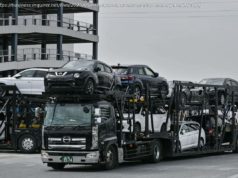A plan to relocate 4,000 U. S. Marines from Okinawa, Japan, to Guam is under review because of North Korea threats.
May 25 (UPI) — A plan to relocate 4,000 U. S. Marines from Okinawa, Japan, to Guam is under review because of North Korea threats.
U. S. Marine Corps Commandant Gen. Robert Neller told the Senate Appropriations Committee Wednesday a realignment plan for the military could be delayed, Kyodo News reported.
„The capabilities of our adversaries have changed the dynamic there, “ Neller said, referring to North Korea.
Tokyo did not confirm Neller’s statement.
Chief Cabinet Secretary Yoshihide Suga told reporters Thursday that the „relocation to Guam remains unchanged and I’m not aware of anything otherwise.“
Pyongyang most recently launched a midrange ballistic missile on Sunday, and claimed the projectile was a solid-fuel missile that can swiftly target South Korea’s missile defense system KAMD, as well as U. S. military bases in Japan and the Pacific.
The original plan was to move 4,000 Marines to Guam and another 5,000 Marines to Hawaii by 2022.
Neller also said he and Commander of the U. S. Pacific Command Harry Harris have reviewed and „looked at different options for where they might at least temporarily base aircraft because of the evolving threat.“
U. S. military experts and Japanese government officials are looking into relocation alternatives in Hawaii or Darwin, Australia, if transferring Marines to Guam presents challenges.
Maintaining forces in Guam, Tinian and other nearby islands must first take the environment into account, one Marine officer said, according to Japanese press reports.
A separate decision to relocate a U. S. military base within Okinawa has been met with strong local opposition.
„They should not make Okinawa shoulder the burden of hosting [U. S.] bases anymore, “ one protester said as a new base was being built in the Henoko area of the island in April.
The relocation within Okinawa has been a work in progress since 1996, and the United States and Japan had agreed a relocation facility in the Henoko area would be the „only solution“ to problems with the current U. S. Air Station Futenma.






